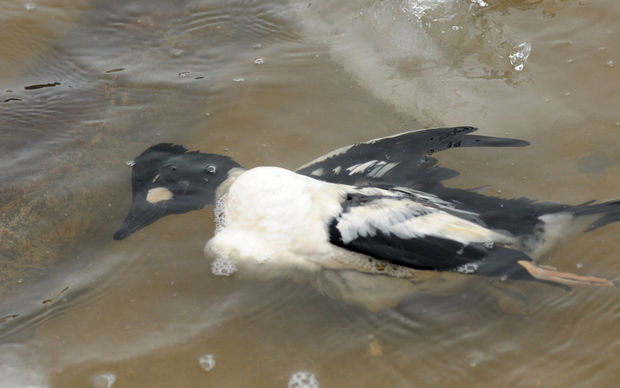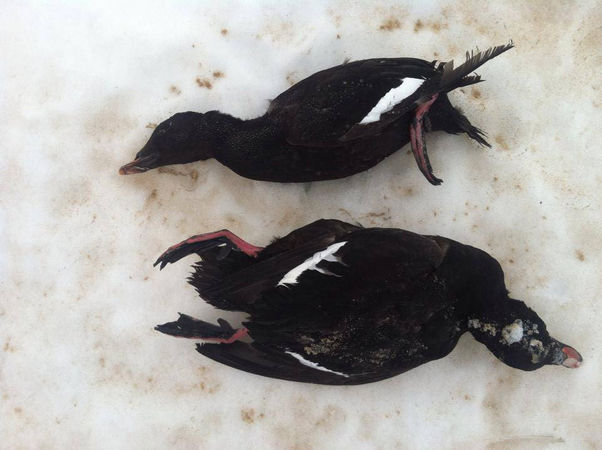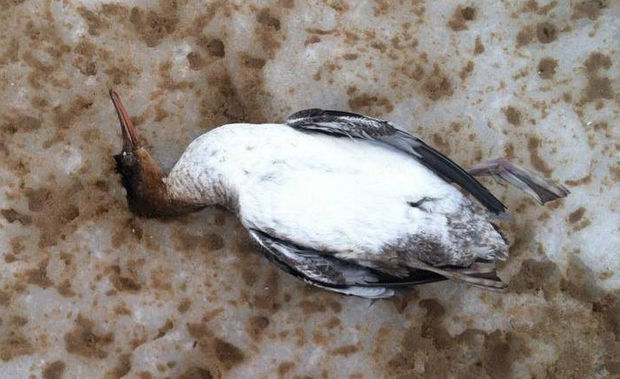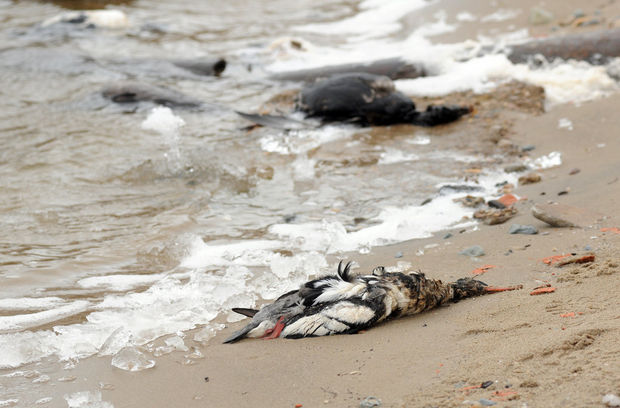
Schnautz, 33, a waterfowl hunting and ice fishing guide, said he's seen a variety of species that just couldn't make it through the winter.
"I've seen diving ducks, loons, swans, gulls, a little bit of everything," Schnautz said. "I've been down to the Kalamazoo River and seen dead birds on the river bank. They're everywhere."
The losses aren't just around West Michigan, Schnautz said.
"I guide on Saginaw Bay and I've seen them all the way down to Lake Erie," Schnautz said. "They're in Muskegon, Traverse City, up in Ludington, too. I've mostly seen canvass backs, redheads, long-tailed ducks and some types of mergansers.
Michigan DNR wildlife outreach technician Holly Vaughn said the die-off can be attributed to the amount of ice coverage on inland lakes as well as the Great Lakes.
"Most of the birds that are washing up are diving birds like canvass backs, redheads, long-tailed ducks and some types of mergansers," Vaughn said. "It's mostly because they weren't able to get to their main food source.
"We've sent quite a few specimens to the lab to make sure there's nothing more serious happening and so far we haven't seen a cause other than starvation," Vaughn said.
Schnautz said he's seen birds throughout the winter out on the ice of Lake Michigan and in parking lots, backyards and rooftops; stranded and looking for open water.
"Sea ducks are flying in search of water for food and they're running out of energy," Schnautz said. "They're landing because of exhaustion because they can't find open water. They see big black spaces and think it's water when it's really just asphalt or tar rooftops."
"I was out on the ice on Lake Michigan some this year and I saw a bunch of birds that were dead in ice crevices and some that looked like they landed and just froze right into the ice."
While this is sad to see, Vaughn said, it's really the ebb and flow of nature and usually takes care of itself.
"The birds that we've seen have been in poor condition without much fat on their bodies," Vaughn said. "It's the nature of rough winters but it's also a good way of keeping populations within reasonable levels."
"It is sad and tough to see but it's also nature and over the years nature will make up for this harsh winter and the population will come back."






Reader Comments
to our Newsletter